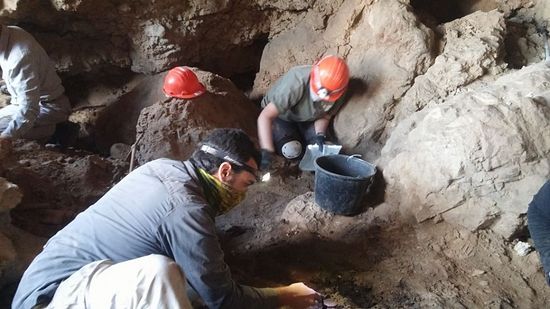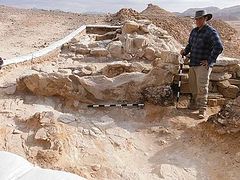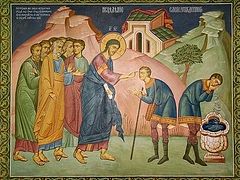Moscow, February 9, 2017
For the first time in sixty years, the discovery of a new Dead Sea Scroll cave was announced on Wednesday. Researchers from Hebrew University discovered the storage space in the cliffs west of Qumran over the Green Line in the West Bank, reports The Times of Israel.
“Until now, it was accepted that Dead Sea Scrolls were found only in eleven caves at Qumran, but now there is no doubt that this is the twelfth cave,” said Hebrew University’s Oren Gutfield, who headed the dig with his colleague Ahiad Ovadia and with the help of Randall Price and students from Liberty University in Virginia.
Only, no scrolls were found. But archaeologists did find a small piece of parchment in a jar amongst at least seven storage jugs identical to those found in the previous eleven caves, along with 1940s pickaxes, pointing to Bedouin looters. There is “no doubt we have a new scroll cave,” Gutfield said.
The scrap of parchment and other organic remains have been dated to the first century BC, towards the end of the Second Temple period when the desert community at Qumran was active. No writing was discovered on the parchment piece, although multispectral imaging will be carried out to reveal any ink invisible to the naked eye.
The find comes as part of the Israel Antiquities Authority’s “Operation Scroll” program aimed at identifying and exploring all the caves of the Judean Desert, writes WND.com. The new cave has been dubbed Q12.
“The important discovery of another scroll cave attests to the fact that a lot of work remains to be done in the Judean Desert and finds of huge importance are still waiting to be discovered,” said Israel Hasson, director-general of the Israel Antiquities Authority. Moreover, the looting in the cave raises questions about the origin of the fragments discovered in the other caves. A seventh century BC papyrus scrap recovered from looters, containing the oldest Hebrew-language mention of Jerusalem was announced by the IAA in October 2016.
Also found were fragments of cloth used to wrap the scrolls, a string used to bind the scrolls, as well as pottery shards, flint blades, arrowheads, and a carnelian stamp seal which indicates human activity in the caves thousands of years before it was used for storing Scripture.





